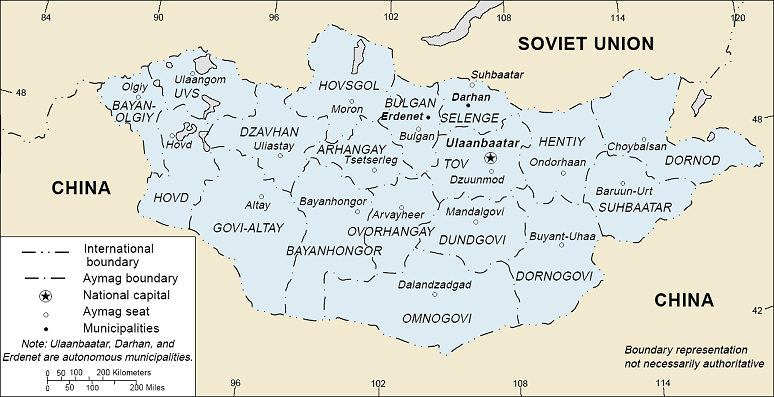| This Web book is based on public domain material provided by the US government and is available in several versions. See the editorial for more information. |

|

Home  Historical Setting Historical Setting  Early Development, ca. 220 B.C.-A.D. 1206 Early Development, ca. 220 B.C.-A.D. 1206  Origins of the Mongols Origins of the Mongols |
|
| See also: Introduction | |






|
|
Origins of the Mongols
Archaeological evidence places early Stone Age human habitation in the southern Gobi between 100,000 and 200,000 years ago. By the first millennium B.C., bronze-working peoples lived in Mongolia. With the appearance of iron weapons by the third century B.C., the inhabitants of Mongolia had begun to form tribal alliances and to threaten China. The origins of more modern inhabitants are found among the forest hunters and nomadic tribes of Inner Asia. They inhabited a great arc of land extending generally from the Korean Peninsula in the east, across the northern tier of China to the Kazakh Soviet Socialist Republic and to the Pamir Mountains and Lake Balkash in the west. During most of recorded history, this has been an area of constant ferment from which emerged numerous migrations and invasions to the southeast (into China), to the southwest (into Transoxiana - modern Uzbek Soviet Socialist Republic, Iran, and India), and to the west (across Scythia toward Europe). By the eighth century B.C., the inhabitants of much of this region evidently were nomadic Indo-European speakers, either Scythians or their kin. Also scattered throughout the area were many other tribes that were primarily Mongol in their ethnologic characteristics.
|
|
Home  Historical Setting Historical Setting  Early Development, ca. 220 B.C.-A.D. 1206 Early Development, ca. 220 B.C.-A.D. 1206  Origins of the Mongols Origins of the Mongols |
|
Last Update: 2010-12-07


